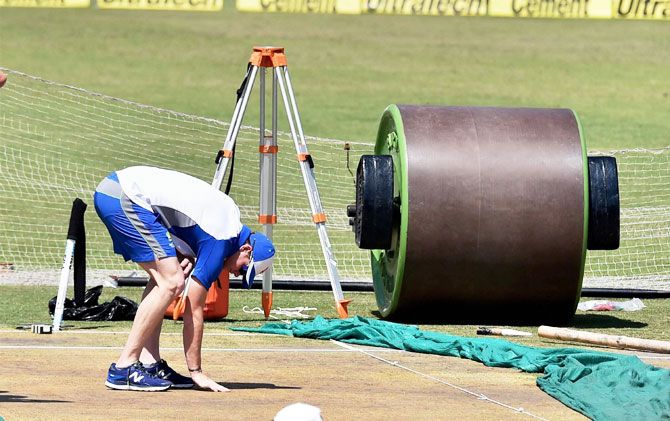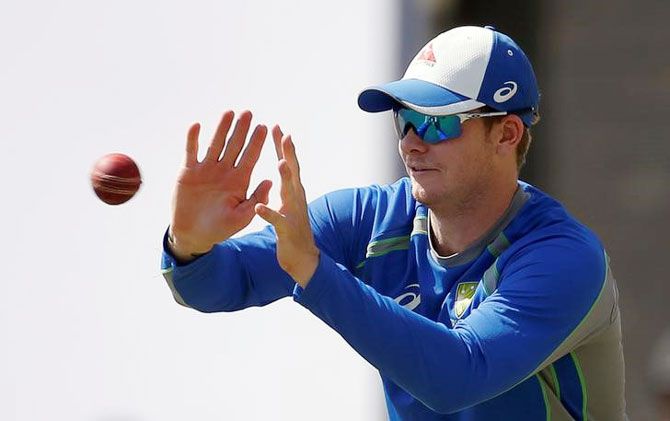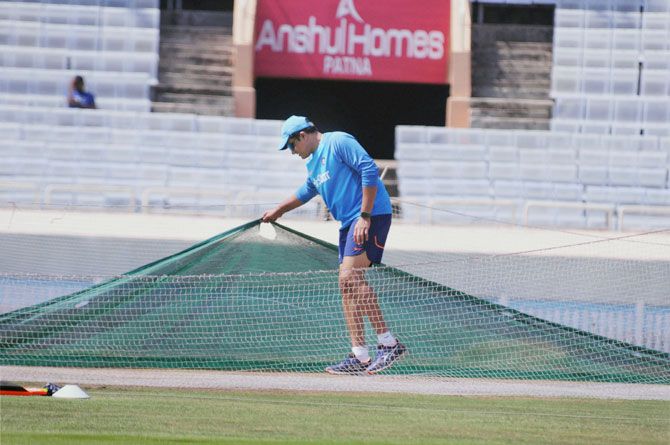'I think we've adopted some good plans and played some very good cricket so far in this series. This wicket is no different'
'I've not seen a cricketer who can predict the outcome after seeing a pitch. I think it's hard to assess how much it will turn or seam. That's why it's said cricket is a complicated sport'

Australia will once again have to make do with lack of bounce at Ranchi but the tourists have the wherewithal to overcome that challenge in the third Test against India, skipper Steve Smith said on Wednesday.
In the series opener at Pune, the tourists triumphed by 333 runs inside three days on a pitch which offered low bounce and sharp turn and was subsequently rated 'poor' by match referee Chris Broad.
In the second match at Bengaluru, the bounce was uneven and India pulled off a thrilling 75-run win to level the series ahead of the third match in the brand new Test venue in Ranchi.
Smith had a quick look at the 22-yard strip at the Jharkhand State Cricket Association Stadium on Wednesday and the 27-year-old was immediately convinced his team would need to adapt to the low bounce of the track.
"When we came over to India, we were under no illusions that we were going to potentially get some difficult wickets to play on," Smith told reporters.
"And the first two Test matches were pretty tough wickets. I think we've adopted some good plans and played some very good cricket so far in this series. This wicket is no different."
"I think you have to be hitting the stumps majority of the times. You have to keep things as simple as you can, try and build pressure and perhaps take wickets in different ways. We've got plans in these kinds of wickets, where there isn't much bounce," he said.

"You obviously have to adapt to whatever the wicket is doing. So I don't think forgetting the wicket is probably the right way around it. You need to know what you're likely to expect and play according to what the wicket is."
Smith said he expected the pitch to hold together quite well on the first day and then "break up from there", adding that adaptation would be key to success and remaining in the contest for a long time.
Smith was surprised by the dark hue of the pitch, saying its low bounce would negate some of the threat of his pacemen.
"I've never seen a wicket that’s looked quite as dark as that one is," Smith told the Cricket Australia (CA) website.
"It looks like there's mud sort of rolled together ... It’s 22 yards and we’ve played on some difficult wickets in the first two games and we’ve played some pretty good cricket, so we’re confident that we can play with whatever this wicket does."

On the other hand, India captain Virat Kohli refused to attach any importance to the track.
Kohli felt that the external conditions would determine how the pitch would behave.
"A lot of things, like weather, go behind how the pitch would behave. In hot and humid conditions, we get reverse swing. It's not just the wicket but external conditions play a role," Kohli said on the eve of the third Test.
"I've not seen a cricketer who can predict the outcome after seeing a pitch. I think it's hard to assess how much it will turn or seam. That's why it's said cricket is a complicated sport. You have to be always prepared," the Indian captain added.
Asked if the team’s batting collapse so far in the series has had anything to do with the 22yard strip, Kohli said: "I won't say so much on the pitch. Even on a flat wicket, if you are under pressure, you tend to have collapses. I think most of the batting collapses are more mental than skill.
"Test is more mental, looking at the external factors. Teams who are mentally strong on that sort of wicket, it takes special effort to provide the difference in the game."







 © 2025
© 2025